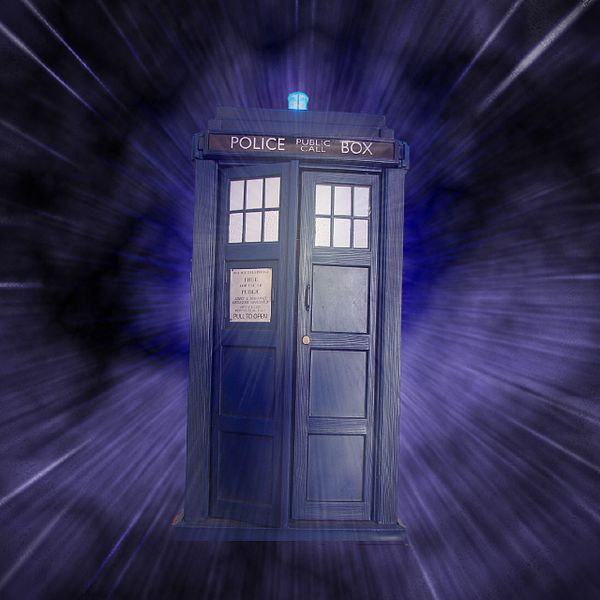In recent years, the British sci-fi legend Doctor Who has enjoyed a resurgence
in popularity in the U.S and the U.K. Still, most Americans know little about the Doctor.
With the 50th anniversary celebration coming up, it is time to catch up. Here are a
few facts to get you going.
Doctor Who premiered on England’s BBC One on November 23, 1963, and has aired almost continuously ever since (although new episodes weren’t produced between 1989 and 2005), making it by far the longest-running science-fiction program on television. With 798 episodes and counting, it’s among the longest-lasting prime-time dramas as well.
In the 1970s, it was one of the first British series to air on American TV and became a cult hit. And in England, it’s a popculture phenomenon—it’s spawned radio series, novels, and several tie-in movies. Eavesdrop for long enough in any British pub, and you’ll hear patrons arguing over who the best Doctor was. In both countries, Doctor Who has had a substantial influence on television. Here’s a primer: The premise. The Doctor (who is known only as “the Doctor”) is the last of a race called the Time Lords, who are near-omnipotent, hyperintelligent, and keep a strict non-intervention policy—a law the Doctor breaks when he sets out to explore the universe. Along with a human companion (usually a teenager or young woman), the Doctor travels through time and space.
The TARDIS. This time-travel machine (an acronym for “Time and Relative Dimension in Space”) resembles a telephone booth on the outside. On the inside, it’s the size of several rooms. (Producers originally planned for the TARDIS to change shape and blend with its surroundings wherever it landed, but their paltry budget precluded building a new TARDIS each week, so the phone-booth format was made permanent.)
The Doctor. The role was originated by William Hartnell, who portrayed the Doctor as a cantankerous old man. Three years into the role, however, Hartnell grew ill and had to quit the show.
Rather than end the series, script editor Gerry Davis came up with the idea that the Doctor could “regenerate” when he grows old or gets injured. That conceit has allowed for lead actors to come and go every few years, contributing to the show’s longevity. To date, 11 actors have portrayed The Doctor.
The Daleks. The Doctor is pursued by this evil race of mutant aliens, who wear conical metallic suits that make them look like big pepper shakers. They yell “Exterminate!” before blasting their foes with ray guns. (The Doctor doesn’t carry a gun—only a “sonic screwdriver.”) One of the charms of Doctor Who is its cheesy special effects and low-budget soundstage sets, but that’s something the show’s creator—BBC head of drama Sydney Newman—didn’t intend: He wanted Doctor Who to be an educational show to teach kids science. But the Daleks, introduced in 1963, proved so popular that the show settled into a serialized drama format. It was soon a Saturday-night ritual for kids and adults alike.
POPULARITY AND DEMISE
The series’ peak of popularity was from 1974 to 1981 in both the U.K. and U.S. (It was reportedly PBS’s most-watched series.) Its success was due in part to Tom Baker, the curly-haired Doctor with a trademark scarf and witty, exasperated attitude. Ratings hit a high of 16 million viewers in 1979, then slid steadily after Baker “regenerated” into Peter Davison. There was an 18-month production hiatus from 1985 to 1986, and with regular viewers at just three million in 1989, the BBC canceled Doctor Who after 26 years and 697 episodes.
REGENERATION
But Doctor Who didn’t go away. The cottage industry of Who radio specials, albums, video games, and merchandise still attracted millions of fans. So, in 1996, the BBC decided to revive it, and to do so in a big way: in the U.S. and the U.K. at the same time. The BBC co-produced a flashy, well-funded made-for-TV movie with the Fox network to serve as a pilot for a new series, although it was technically a continuation of the old series. The May 1996 broadcast was heavily hyped by Fox, but ratings were poor in the United States (it aired against ABC’s Roseanne).
It fared better in the United Kingdom—nine million viewers tuned in—but since Fox paid for the majority of the production, they got the say-so on whether to continue the series, and decided not to. The immortal Doctor looked to stay dead.
But the BBC became interested in Doctor Who again in 2003, as the show approached its 40th anniversary. Retrospectives in print and on television inspired them to relaunch Doctor Who.
Debuting in 2005, with Christopher Eccleston as the roguish Doctor, the series was updated for the new millennium—filmed in high definition on location instead of in a studio, with a bigger budget and better special effects. David Tennant took over as the Doctor from 2005 to 2010, then Matt Smith took the reins as the 11th Doctor. After his retirement in 2014, Peter Capaldi will pick up as the 12th Time Lord. Also, it was recently confirmed that 90 of the 106 episodes lost since the 1960s have been recovered.








